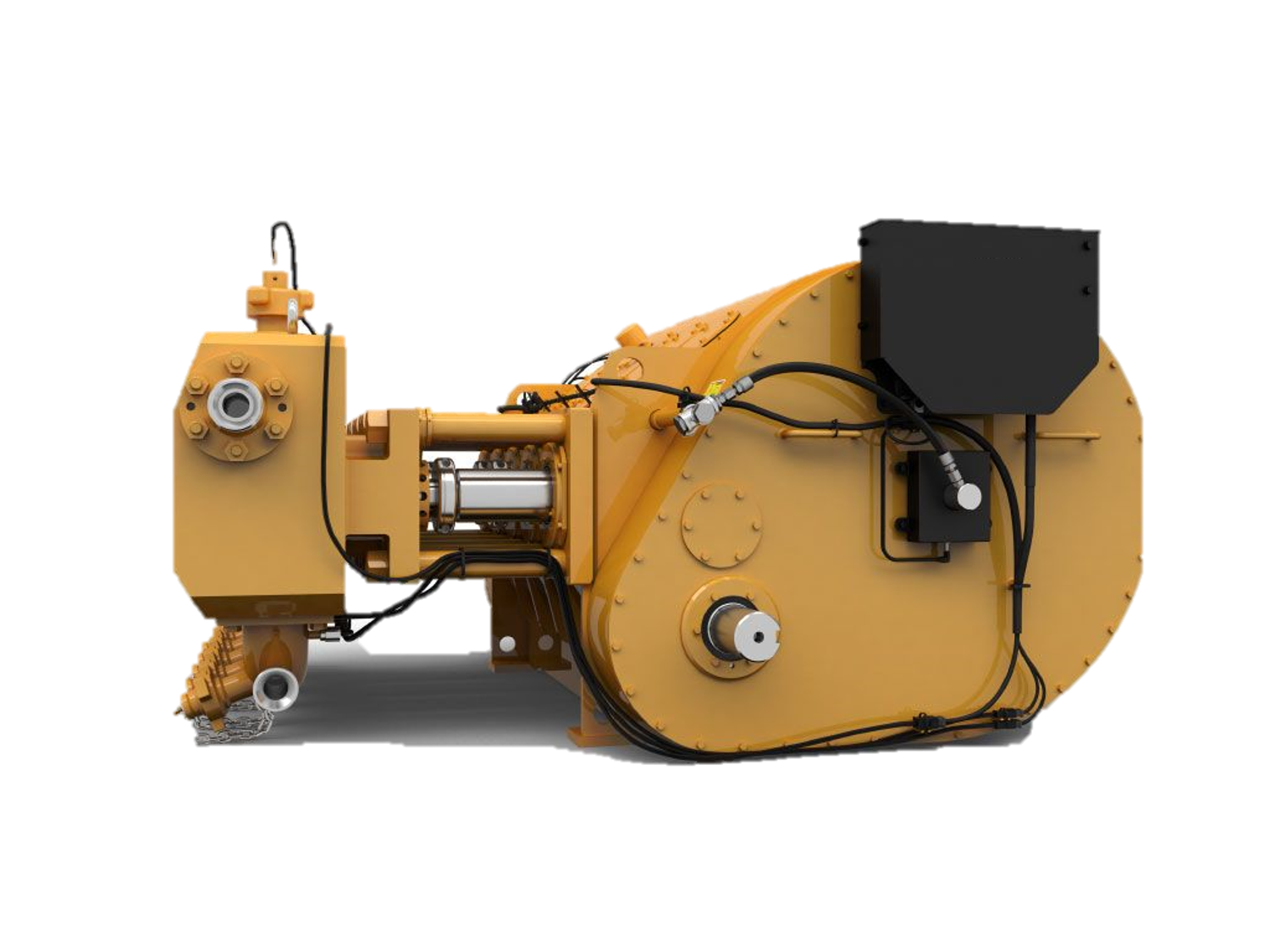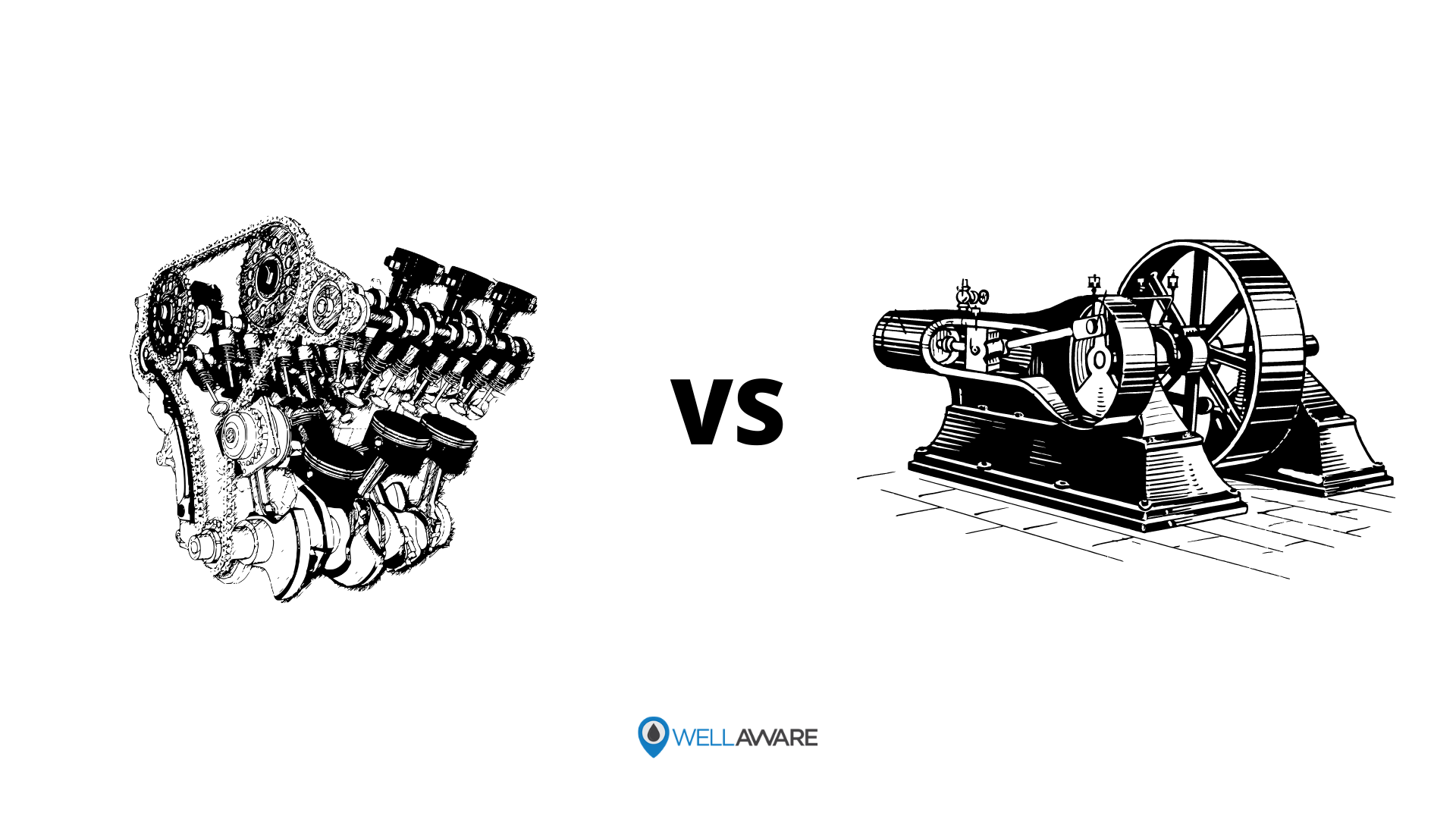
News, Insights, and more on Industrial IoT
 Pumps are everywhere and critical to industrial processes involving liquids. They come in all shapes and sizes - some inject a few trickles a day while others pump tens of thousands of gallons a minute.
Pumps are everywhere and critical to industrial processes involving liquids. They come in all shapes and sizes - some inject a few trickles a day while others pump tens of thousands of gallons a minute.
Pumps tend to be one of the biggest energy consumers in industrial operations. Pump motors, specifically, require a lot of energy. For instance, a 2500 HP triplex pump used for frac jobs can consume almost 2000 kW of power, meaning a full day of fracking can cost several thousand dollars in energy costs alone!
So, naturally, operators should want to maximize energy efficiency to get the most for their money. Even a 1% improvement in efficiency can decrease annual pumping costs by tens of thousands of dollars. The payoff is worth the effort. And if you want to remotely control your pumps, you want to keep efficiency in mind.
In this post, we’ll point you in the right direction and discuss all things related to pump efficiency. We’ll conclude with several tips for how you can maintain pumping efficiency and keep your energy costs down as much as possible.
So what exactly is pump efficiency?
In simple terms, pump efficiency refers to the ratio of power out to power in. It’s the mechanical power input at the pump shaft, measured in horsepower (HP), compared to the hydraulic power of the liquid output, also measured in HP. For instance, if a pump requires 1000 HP to operate and produces 800 HP of hydraulic power, it would have an efficiency of 80%.

Pump efficiency depends on the size and configuration of the pump.
Remember: pumps have to be driven by something, i.e., an electric or diesel motor. True pump system efficiency needs to factor in the efficiency of both the motor AND the pump.
Consequently, we need to think about how electrical power (when using electric motors) or heat power (when using combustion engines) converts into liquid power to really understand pump efficiency.
Good pump efficiency depends, of course, on pump type and size. High-quality pumps that are well-maintained can achieve efficiencies of 90% or higher, while smaller pumps tend to be less efficient. In general, if you take good care of your pumps, you should be able to achieve 70-90% pump efficiency.
Motor efficiency is also an important factor here. Motor efficiency depends on the fuel type, whether electricity or hydrocarbon, which in turn depends on availability and cost.
AC motors can achieve 90%+ efficiency when converting electrical to mechanical energy. Combustion engines are much less efficient, with typical efficiency ratings coming in at ~20% for gasoline and ~40% for diesel. Your choice of engine or motor type will depend on the availability and cost of fuel or electricity in your area.

Electric motors are more efficient than combustion engines, but site location and the cost of fuel can make the choice of combustion engines more practical.
Now that we have a better understanding of the pump efficiency metric, let’s talk about how to calculate it. The mechanical power of the pump, or the input power, is a property of the pump itself and will be documented during the pump setup. The output power, or hydraulic power, is calculated as the liquid flow rate multiplied by the "total head" of the system.
Remember: we’re trying to find the ratio of power in to power out. Since rations require equal units on both sides, we'll have to do some conversions to get our hydraulic power units in HP. You'll see how this is done in the example below.
IMPORTANT: to calculate true head, you also need to factor in the work the pump does to move fluid from the source. For example, if the source water is below the pump, you need to account for the extra work the pump puts in to draw source water upwards.
Total Head = Discharge Head + Elevation Head*
*Note - this calculation assumes the pump inlet is not pressurized and that friction losses are minimal. If the pump experiences a non-zero suction pressure, or if there is significant friction caused by the distance or material of the pipe, these should be factored in as well.
So here’s an example. Consider a 1,000 HP pump that outputs water at a flow rate of 5,000 BPD at 10,000 PSI, sourcing water from a pond 20 ft below.
Efficiency = Output Power / Input Power
Efficiency = Output Power / 1,000 HP
We know the input power, so know we just need to calculate the output power, using the units conversions we mentioned above.
Output Power = Flow Rate * Total Head
Output Power = 5,000 BPD * Total Head
We know the flow rate, but we need to get the total head by factoring in elevation changes to the discharge pressure.
Total Head = Discharge Pressure + Elevation Head
Total Head = 10,000 PSI + Elevation Head
Every foot of water creates an additional 0.434 PSI of pressure, so we'll find the elevation head by converting the change in elevation in feet to the suction pressure created by the water.
Elevation Head = Elevation Change (ft) * 0.434 PSI / ft H2O
Elevation Head = 20 ft * 0.434 PSI / ft = 8.67 PSI
Now that we have the elevation head, we can add it to the discharge pressure to get the total head.
Total Head = 10,000 PSI + 8.67 PSI
Total Head = 10,009 PSI
You'll notice that the elevation head is minimal compared to the discharge pressure, and has minimal effect on the efficiency of the pump. As the elevation change increases or the discharge pressure decreases, however, elevation change will have a greater impact on total head.
Now that we have total head, we can use unit conversions to calculate the output power.
Output Power = 5,000 BPD * 10,009 PSI
5,000 BPD = 0.325 ft3/s
10,009 PSI = 1,441,296 lb/ft2
Output Power = 0.325 ft3/s * 1,441,296 lb/ft2
Output Power = 468421 lb-ft/s
468421 lb-ft/s = 851.67 HP
Now that we have the output power in HP, we can easily calculate pump efficiency!
Efficiency = 851.67 HP / 1,000 HP
Efficiency = 85.2%
Obviously, that’s a fair amount of math to get at the pump efficiency, considering all of the units conversions that need to be done. To avoid doing these calculations manually, feel free to use our simple pump efficiency calculator.
Our pump efficiency calculator lets you quickly calculate pump efficiency without needing to worry about doing unit conversions.
Now it’s time to cover how to measure pump efficiency. In other words, how do we collect the data that we need for the calculations described above?
Our calculations use static variables (pump-rated horsepower and water source elevation) and dynamic variables (discharge flow and pressure). To determine pump efficiency, we need to measure the static variables only once, unless they change.
On the other hand, we have to measure dynamic variables continuously through use of flow and pressure gauges.
Pressure and temperature gauges can be used to remotely monitor flow rate and pressure to calculate pump efficiency.
If you want to measure the true efficiency of your pump, taking energy consumption into account, you could add an electrical meter. Your meter should consist of a current transducer and voltage monitor (if using DC) for electrical motors or a fuel gauge for combustion. This would give you a true understanding of how pump efficiency affects energy consumption, and ultimately your bank account.
Up until this point, we’ve covered the ins and outs of how to determine pump efficiency. We’re now ready for the exciting stuff - how to improve pump efficiency!
One of the easiest ways to improve pump efficiency is to actually monitor pumps for signs of efficiency loss! If you monitor flow rate and discharge (output power) along with motor current or fuel consumption, you’ll notice efficiency losses as soon as they occur. Simply having pump efficiency information on hand empowers you to take action.
Remote monitoring software can allow you to track pump efficiencies on your phone or computer
Another way to increase efficiency is to keep pumps well-maintained. Efficiency losses mostly come from mechanical defects in pumps, e.g., friction, leakages, and component failures. You can mitigate these issues through regular maintenance that keeps parts in working order and reveals impending failures. Of course, if you are continuously monitoring your pumps for efficiency drops, you’ll know exactly when maintenance is due.
You can also improve pump efficiency by keeping pumps lubricated at all times. Lubrication is the enemy of friction, which is the enemy of efficiency (“the enemy of my enemy is my friend…”).
The best way to ensure lubrication is to monitor lube tanks or sumps and make sure you always have lubrication on hand. You can also monitor lubricant consumption for significant changes. If lubricant usage goes up, it could signal that friction has increased in the system.
A fourth way to enhance pump efficiency is to ensure your pumps and piping are sized properly for your infrastructure. Although we’re bringing this up last, it’s really the first step in any pumping operation. If your pumps and piping don’t match, no amount of lubricant or maintenance will help.
Pipes have physical limits to how much fluid they can move at a particular pressure. If pipes aren’t sized properly, you’ll lose efficiency because your motor will have to work harder. It’s like air conditioning - if your ductwork isn’t sized appropriately for your home, you’ll end up paying more on your energy bill.
In this post, we’ve given you the full rundown when it comes to calculating and improving pump efficiency. You can now calculate, measure, and improve pump efficiency, potentially saving your business thousands of dollars annually on energy costs.
For those just getting started with pump optimization, we offer purpose-built, prepackaged solutions that will have you monitoring pump efficiency in minutes, even in hazardous environments.
Check out our flow, pressure, and pump monitoring and control products to learn more about how to monitor and improve pump efficiency.
Like what you're reading? Sign up for updates!
Have a Question?